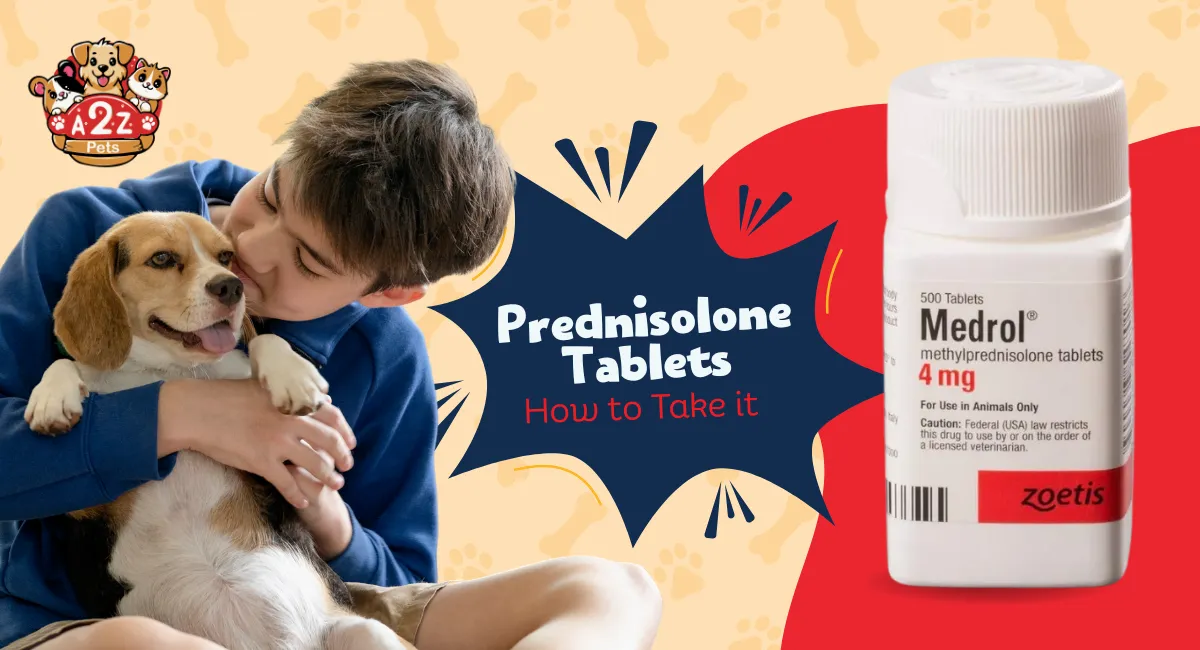Prednisolone Tablets: When And How To Take Them For Best Results

Prednisolone is a widely used corticosteroid medication that helps manage inflammation and immune-related conditions in humans and pets. Whether prescribed for arthritis, allergies, or respiratory conditions, Prednisolone Tablets offer relief when used correctly. However, the correct dosage, timing, and precautions are essential for optimal results.
This guide covers everything you need to know about taking Prednisolone Tablets, including their uses, dosage, and administration tips.
Prednisolone is a synthetic steroid that mimics cortisol, a natural hormone in the body. It reduces inflammation, suppresses immune responses, and provides relief for conditions like asthma, arthritis, and skin disorders. Veterinarians also prescribe Prednisolone Tablets for cats and dogs to manage allergies, autoimmune diseases, and other health conditions.
The timing of Prednisolone Tablet intake depends on the condition being treated. Here are some general guidelines:
Morning Dosage: Since prednisolone affects cortisol levels, it’s best taken in the morning to align with the body’s natural rhythm and reduce side effects.
With Food: Taking it with food minimizes stomach irritation.
As Prescribed: Always follow the doctor’s instructions regarding dosage and duration.
Consistency is Key: Give at the same time each day.
With Food or Treats: This helps reduce stomach upset.
Monitor Behavior: Monitor side effects like excessive thirst or urination.
The correct dosage varies depending on the condition being treated.
Prednisolone is typically prescribed in doses ranging from 5mg to 60mg per day, depending on the severity of the condition. Your doctor will determine the right dose and may taper it down gradually to avoid withdrawal effects.
Cats: Often prescribed at 0.5 to 2 mg per pound of body weight per day.
Dogs: Dosage typically ranges from 0.1 to 1 mg per pound of body weight.
Veterinarian Supervision: Always consult a vet before adjusting the dose.
To maximize effectiveness and reduce side effects, follow these best practices:
Follow Your Doctor’s Vet’s Instructions: Never adjust the dosage independently.
Do Not Stop Abruptly: Tapering off is necessary to prevent withdrawal symptoms.
Take with Food: Helps prevent nausea and stomach upset.
Stay Hydrated: Drink plenty of water to minimize dry mouth and dehydration.
Monitor for Side Effects: Watch for mood, appetite, or digestion changes.
Like all medications, prednisolone can cause side effects. Some common ones include:
Increased appetite and weight gain
Mood swings
Insomnia
Stomach irritation
Increased blood sugar levels
Management Tips: Eat a balanced diet, engage in physical activity, and take medication in the morning to reduce sleep disturbances.
Increased thirst and urination
Panting (dogs)
Behavioral changes
Vomiting or diarrhea
Management Tips: Provide fresh water, monitor behavior, and inform the vet of any concerns.
Diabetics: Prednisolone can raise blood sugar levels, requiring monitoring.
Pregnant/Breastfeeding Women: Consult your doctor before using prednisolone.
Pets with Kidney or Liver Issues: Dosage adjustments may be needed.
For reliable, high-quality prednisolone, A2Z RX offers trusted sources for both human and pet medications. To guarantee safety and effectiveness, ensure you purchase from reputable pharmacies or vet clinics.
Prednisolone Tablets are a powerful medication that can provide significant relief when used correctly. Understanding the proper dosage, timing, and potential side effects for humans or pets is key to achieving the best results. Always follow medical guidance and prioritize health monitoring during treatment.
By following these best practices, you can ensure that the Prednisolone Tablet works effectively while minimizing adverse effects.

© 2024 A2Z Pets Made With By VBE Services.
